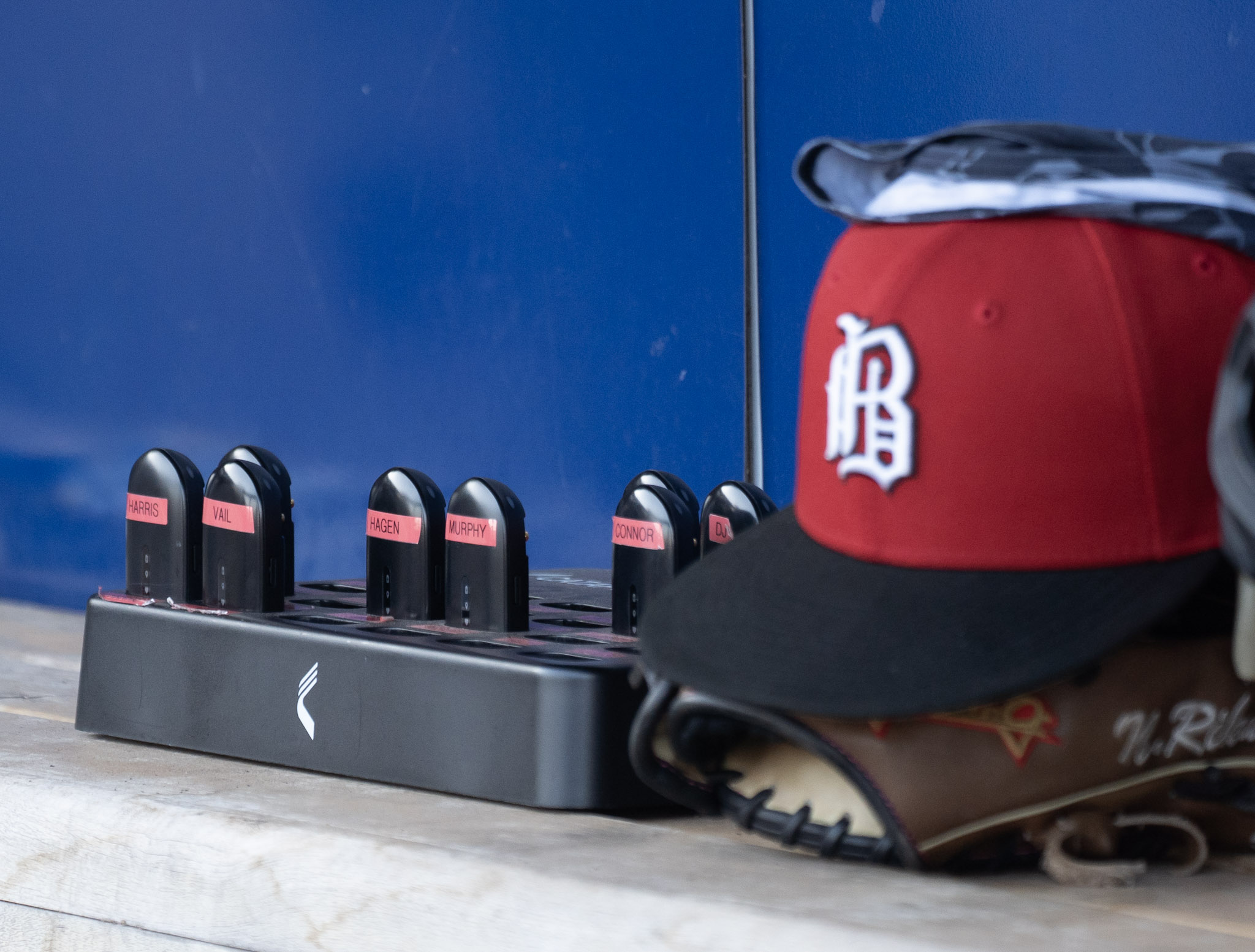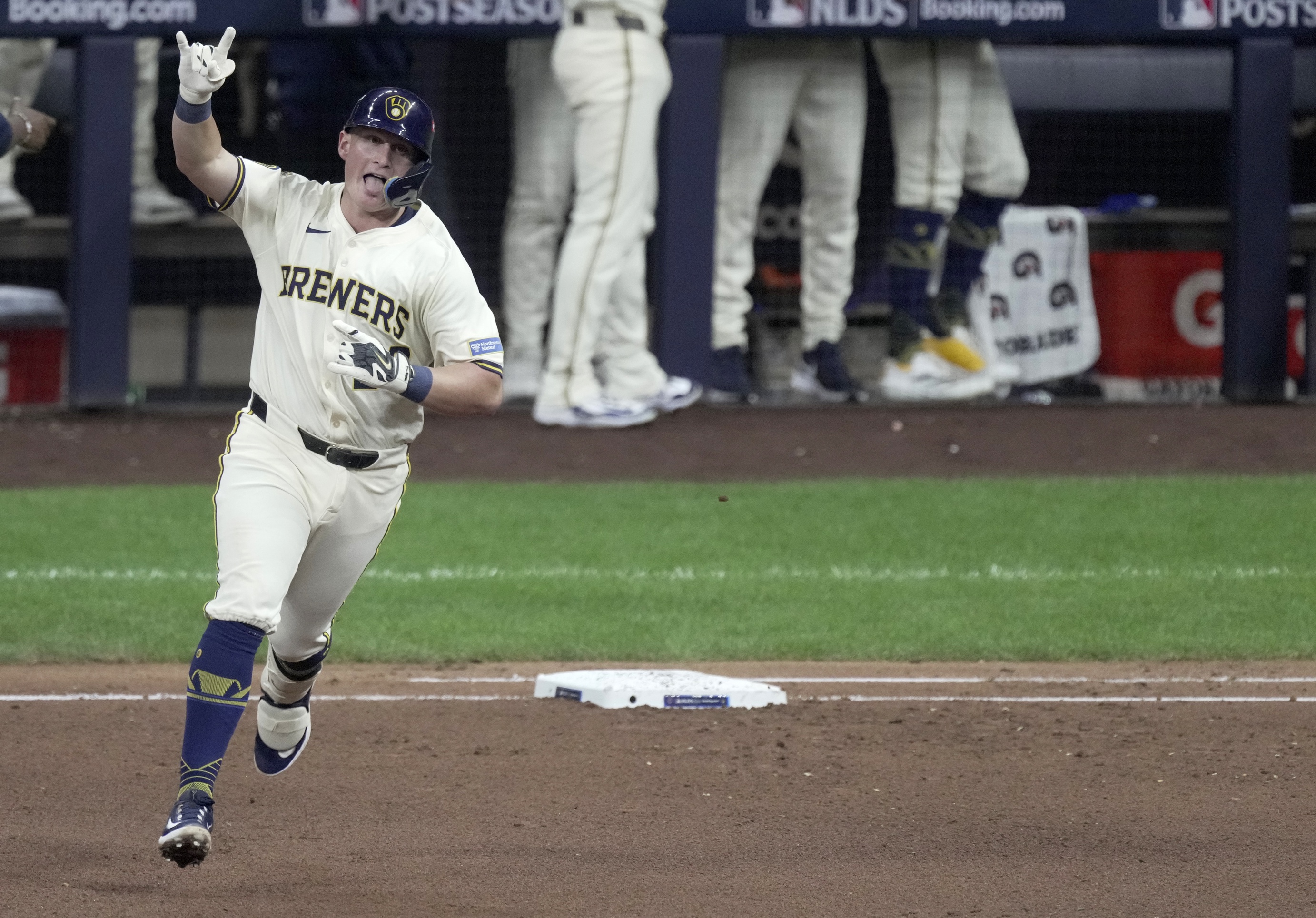How many times have you fantasized about what it would be like to watch an entire baseball game without a single player stepping out of the batter’s box to adjust his batting gloves?
Well, Nomar Garciaparra be damned, that dream came true for me in Charlotte this past weekend as MILB enforced it’s pitch-clock rules and, I gotta say, it was glorious.
For the players and coaches, though, it was probably closer to a nightmare. They were less than thrilled, especially when they got rung up for an automatic third strike. In fact, Seby Zavala was tossed from a game when it happened to him this weekend.
Well we have our first casualty of the new rules. Seby Zavala gets rung up for not getting in the box and then sent to the locker room in the 9th. #Knights #WhiteSox pic.twitter.com/9W2ZD3MEJR
— Ian Eskridge (@dailywhitesox) April 16, 2022
For the Charlotte Knights in particular, it was quite the weekend for adjustments. Not only did pitch-clock rules take center stage, but Truist Field, the team’s home ballpark, is also one of the test sites for automated balls and strikes (aka robot umps), and that went into effect as well.
Here are some observations.
NEW PITCH-CLOCK ENFORCEMENT
In essence, pitchers have 14 seconds to throw a pitch, unless a runner is on base, in which case he has 18 seconds. I’m sure it is quite disruptive to pitchers who work really slowly, but it didn’t seem to bother anybody pitching for the Charlotte Knights or Memphis Redbirds this weekend. There may have been one or two instances of a pitcher being penalized a ball, but that’s about it.
For batters, though, it was a different matter. They are given automatic strikes if they are not in the box by the nine-second mark, so that leaves barely any time to step out. And a handful were penalized over the weekend, including at least two for an automatic third strike. It was apparent that some batters were really uncomfortable with the pace.
It may be even tougher for managers and coaches. Knights manager Wes Helms, who also coaches third, said he barely had time to relay signals to batters and baserunners.
.@helms_wes on the faster pace of the game w/new pitch-clock rules.
— jeff cohen (@TripleAJeff) April 17, 2022
As a fan, i like it. But pitchers & hitters alike need to take 20-30 seconds every so often to step out/off, slow the game down & refocus. No way now.
@FutureSox @dailywhitesox pic.twitter.com/E5a08NGyFQ
One of the worst aspects of the rules is that pitchers and hitters alike can’t step off the rubber or out of the box to regain their composure. And that’s actually a really big deal, especially for minor leaguers. It is imperative some revisions to the new rules address this.
“Sometimes, if a hitter or pitcher wants to regather themselves, they don’t have that chance now,” Helms observed. “It goes away from everything we teach these guys. One of the hardest things is to slow the game down, especially when things start to speed up and get out of control, you’ve got to take a step back, and you can’t do that now.“
Helms said there will probably be a lot of drama over the next couple of weeks but, in the end, players and coaches alike will adjust to the point that it becomes a non-issue. (It was probably even more of an adjustment than it should have been because players told me on Saturday that they had no idea it was even being enforced until the umpires informed Helms just minutes before first pitch on Friday.)
Again, I like the pitch clock (though opinions were divided in the press box). I find the pace of play so much more watchable, but MLB needs to experiment with different times because the current ones are too fast.
Here’s another oddity about the six games in Charlotte this week: The rules were only enforced during the last three games, yet the lengths of all of the games were almost the same, excluding an 11-inning, 32-run affair.
John Parke and Matthew Liberatore started both the Tuesday and Sunday’s games, and the number of runs, hits and walks were comparable. Yet Sunday’s game, with the enforced rules, was just 9 minutes faster. Perhaps it was an anomaly and two games does not a sample make. Baseball America estimates the improved pace is closer to 25 minutes. Time will tell (ba-da-boom!).
.@johnparke11 talks about new pitch-clock rules. @helms_wes says MILB will adapt in time & it’ll become a non-issue, but it is a fascinating transition.
— jeff cohen (@TripleAJeff) April 17, 2022
I like a pitch clock, but these are not the correct time limits.
@FutureSox @whitesox pic.twitter.com/looYs8Np37
ROBO-UMPS
Thee drama and confusion about pitch-clock enforcement overshadowed the implementation last week of an automated strike zone in Charlotte.
There are a few issues here. How is the zone different, if any, from most live umpiring? How consistent is it? And for the Knights, at least, how much of an adjustment is it to face robo umps at home and live umps on the road?
At shortstop, Romy Gonzalez has a great view of how balls and strikes are being called, and he was surprised by what appeared to be a lack of consistency, especially because the system is designed for the exact opposite reason — to provide players with a more consistent strike zone.
“It is hard to know,” he said. “I’ve seen pitches that were called strikes and then the next pitch thrown in the same exact spot is not a strike. We’re just going to try to figure it out and adjust to it.
“That’s another thing … having it here and then going on the road and back to the umpires. I think the umpires in Triple-A are good. They are consistent with their zone and you know what you’re going to get. We’ll see. It is still baseball. You have to see the ball, hit the ball, swing at a good pitch. Not much has changed.”
Indeed, much like the pitch-clock enforcement, players say they have no choice but to adjust to the automated strike zone and move on.
“Whether we are at a disadvantage or advantage having it here, having to bounce back and forth with it, is just something that we have to deal with,” Mark Payton said.
There is a lot of new technology involved, and it appeared to me MLB continued to tweak it on the fly — at least in Charlotte last week — to iron out some kinks.
Just prior to opening day, Jake Burger had a funny take on the matter.
“We had a hitters’ meeting yesterday, and they said the zone was going to be an inch-and-a-half wider on both sides and, I’m like, I don’t know how the plate can get wider,” he joked.
“It will be interesting to see how big the zone actually is,” he said, “both outside and inside and up and down. You can kind of adapt pretty quickly, maybe a couple of games. Last year, we had pretty much the same umpire crews, it was probably three different crews that kept rotating, so by the third game, with each of the guys taking his turn behind the plate, you get used to their zones, kind of know what they’re going to call, whether they are going to give an inch inside or up in the zone.”
Catchers are paying particular attention to whether the automated strike zones are implemented across baseball, because guys who make a living as pitch framers are feeling especially vulnerable these days.
The Knights are on the road in Nashville this week. I’ll be curious to get their thoughts in a week’s time about the transition back to live umps, though I’m guessing their preoccupation will be more about pitch clocks than balls and strikes.
Stay tuned.






